
Tuscan-red E8s roll the Pennsylvania Railroad’s Chicago–New York Juniata beneath the George Westinghouse Bridge, which carried the Lincoln Highway over Turtle Creek Valley east of Pittsburgh, in the mid-1950s. Photo by Ralph E. Hallock […]
Read More…
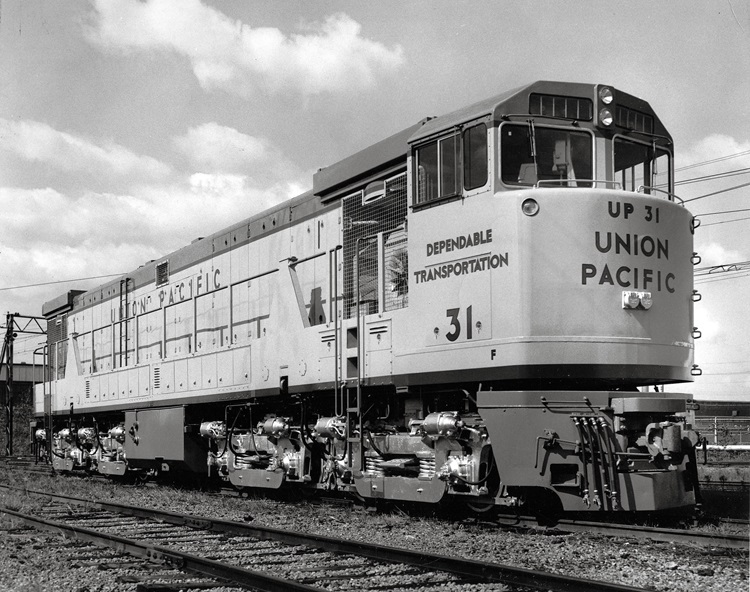
Union Pacific’s infatuation with super-sized diesels led to the creation of the General Electric U50 in 1963. The units featured two 2,500 h.p. engines on B+B-B+B running gear – essentially two U25Bs under one roof. UP bought 13 of the brutes; SP, 3. Photo by General Electric […]
Read More…
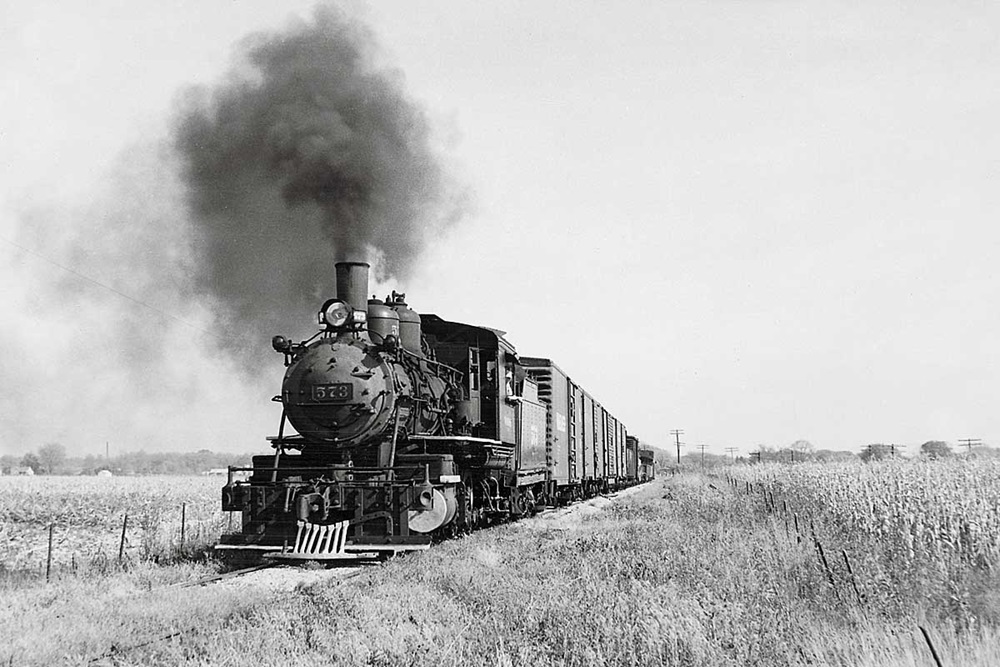
Wabash 2-6-0 573 heads a train on the road’s Keokuk (Iowa) branch just west of Carthage, Ill., on October 18, 1953. Although the road had announced it was 100 percent dieselized, it kept three Moguls to work this line, which included a bridge over the Illinois River that could not even support SW1 diesels. Photo […]
Read More…
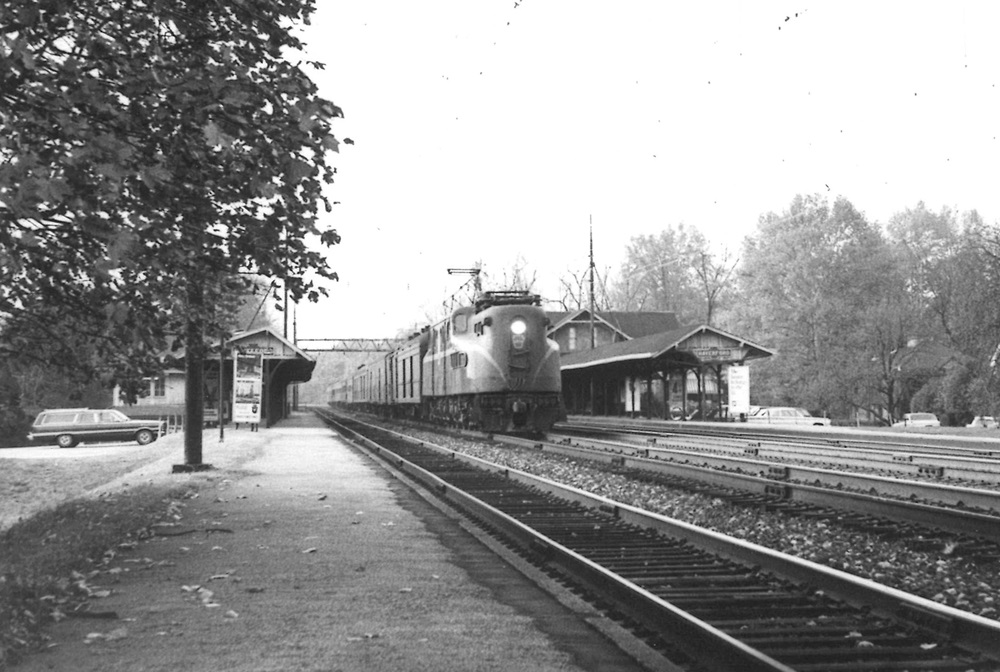
A Pennsylvania Railroad GG1 thunders through Haverford, 9 miles west of Philadelphia on the Main Line, with the Admiral from Chicago in 1966. Photo by Paul J. McGonigal […]
Read More…
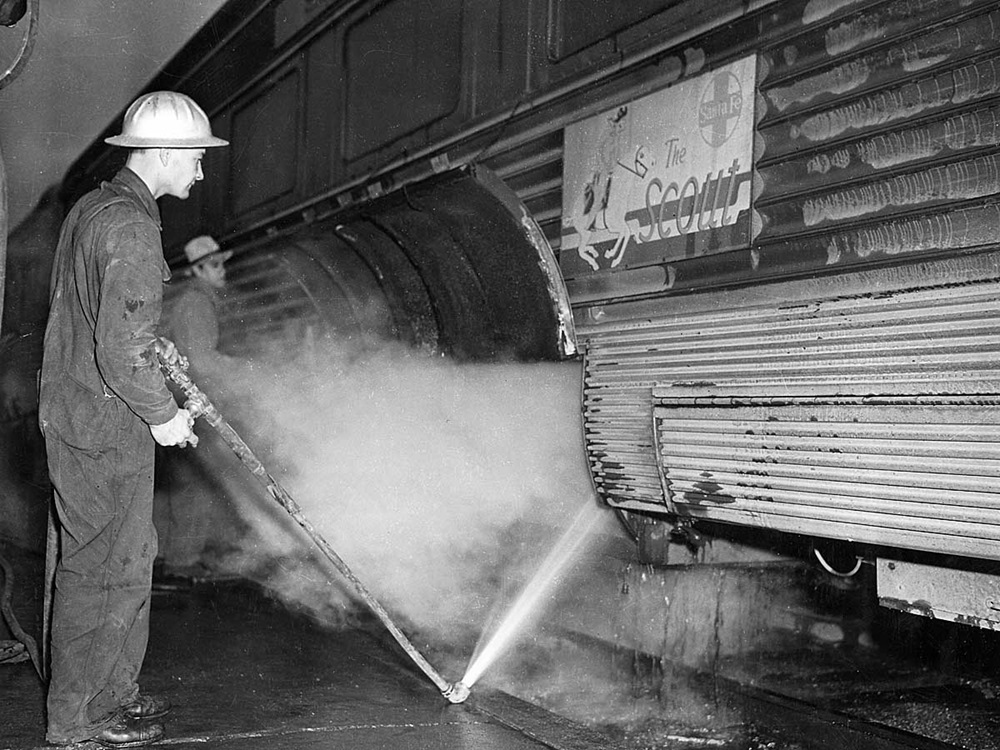
In the late 1940s or early ’50s, a worker at Santa Fe’s Los Angeles coach yard steam-cleans the air-conditioning equipment on the underside of a coach assigned to the Scout. Photo by Santa Fe […]
Read More…
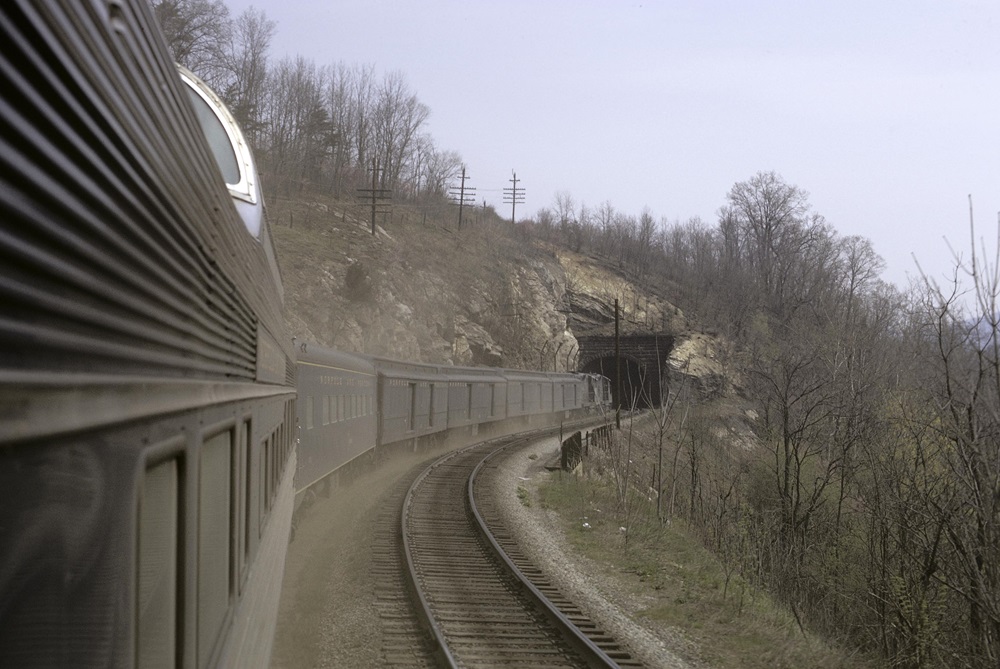
Norfolk & Western’s Cincinnati–Norfolk Pocahontas descends Christiansburg Hill west of Roanoke in a cloud of dust on April 21, 1971. Ten days before its discontinuance upon the arrival of Amtrak, the “Pokey” still carries healthy head-end traffic and an ex-Wabash dome coach. Photo by J. David Ingles […]
Read More…
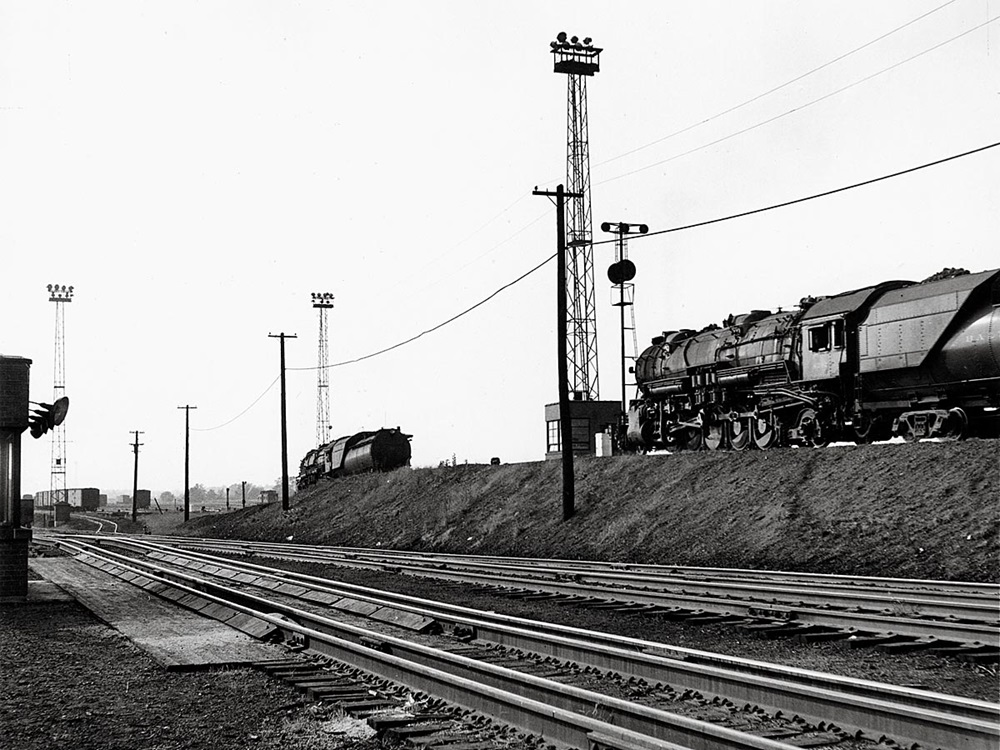
Bumped by diesels from front-line road-freight assignments, two S-1 2-10-2s work as hump engines at Baltimore & Ohio’s big yard at Willard, Ohio, in September 1955. Photo by Philip R. Hastings […]
Read More…

Atlantic Coast Line E7 No. 526 pauses in Miami in January 1965. The 20-year-old locomotive has had some body panels modified and its fuel-tank skirt removed, and is painted in the railroad’s simplified black scheme. Photo by Louis A. Marre collection […]
Read More…
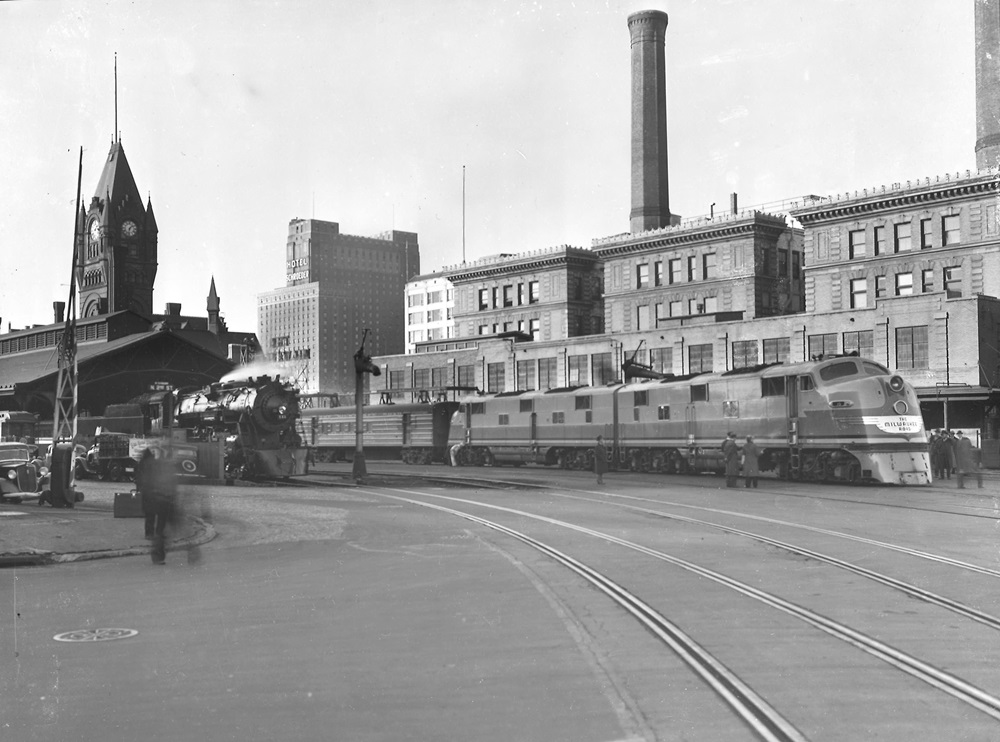
In late 1941, officials in hats and overcoats look over the newest thing on the Milwaukee Road: two-unit Electro-Motive E6 passenger diesel No. 15. At left in this scene at the east end of the road’s station in Milwaukee is suddenly obsolete F6 4-6-4 131. Photo from Classic Trains collection […]
Read More…
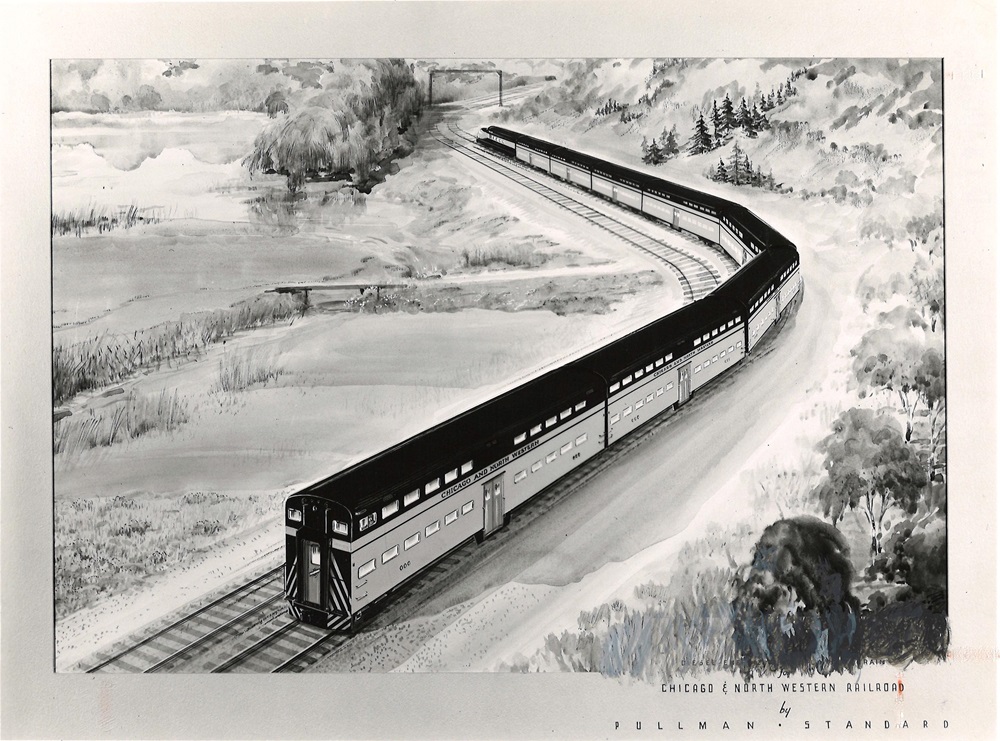
In the mid-1950s, Chicago & North Western and Pullman-Standard collaborated on the first fleet of push-pull commuter cars in North America. First used on C&NW’s Chicago suburban lines, the concept has spread throughout the U.S. and Canada. Photo by Pullman-Standard […]
Read More…
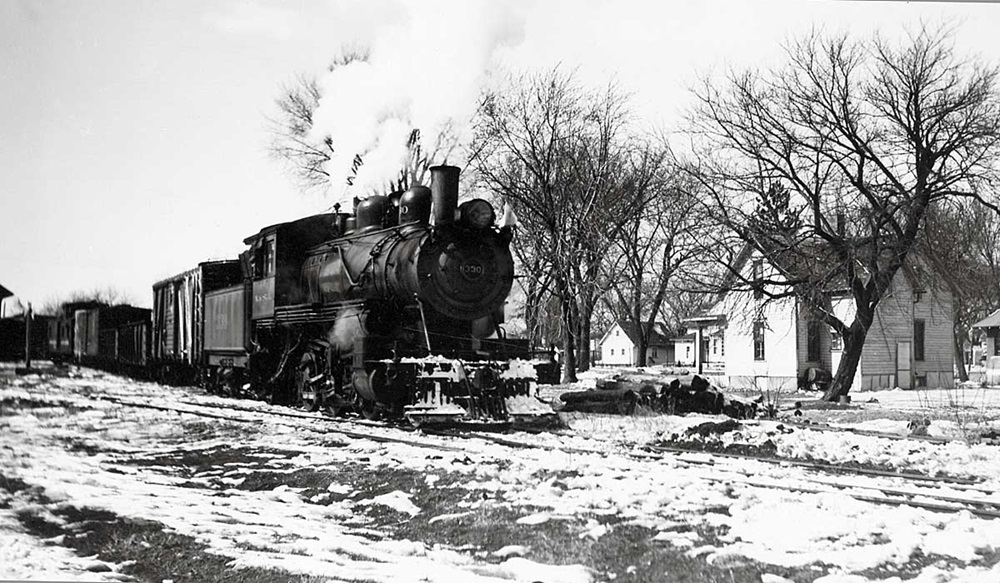
Minneapolis & St. Louis 2-6-0 330 is at Story City, Iowa, on March 9, 1944, with the triweekly mixed train from Marshalltown. Story City was at the end of a 38-mile branch line. Photo by William F. Armstrong […]
Read More…
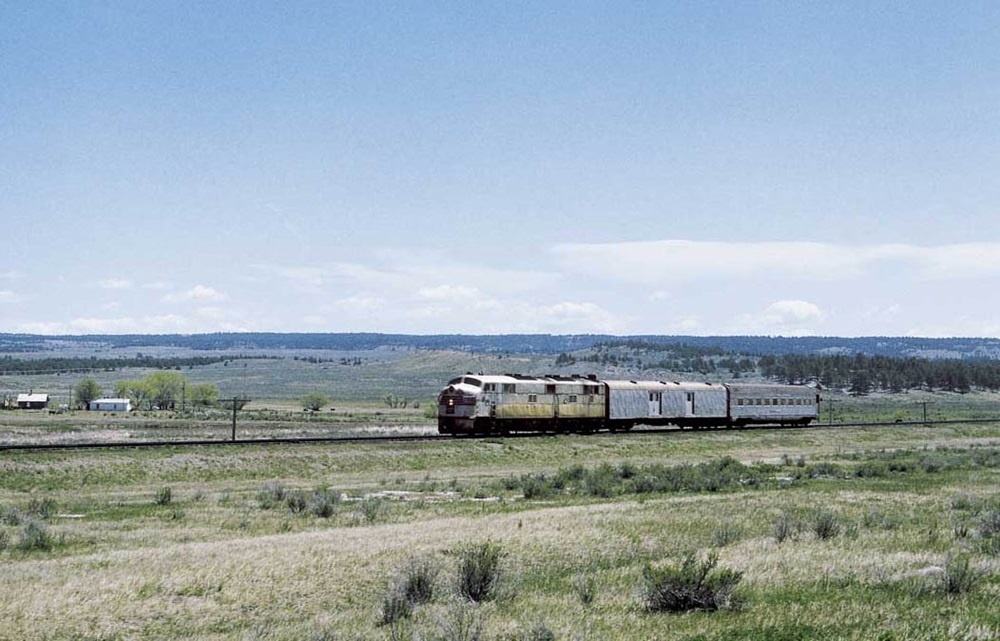
Even relatively pro-passenger roads like the Burlington could get ugly about train-offs. Immediately upon receiving permission to drop Omaha–Billings train 41 (pictured near Osage, Wyo., on May 28, 1969), the road halted it mid-run and bused its riders onward. Photo by Bob Johnston […]
Read More…












